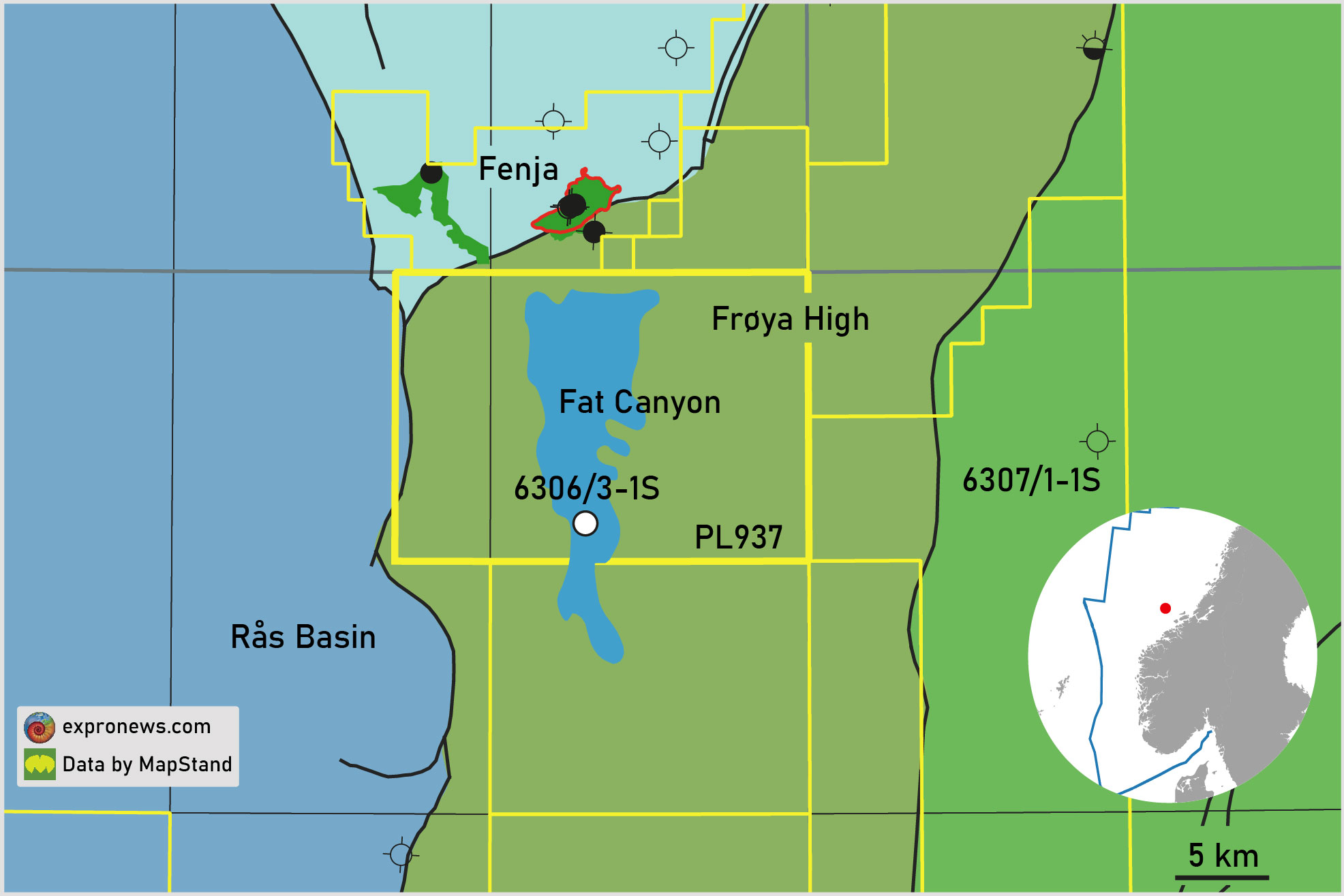About 15 kilometres south of the Neptune-operated Fenja development in the Norwegian Sea, PGNiG and partner Lime Petroleum (15%) have now spudded the eagerly awaited well 6306/3-1S in PL937 well targeting the Fat Canyon prospect on the Frøya High.
The Fat Canyon prospect is an Upper Jurassic pinch-out play, with the main risk being the trap. The Upper Jurassic sands of the prospect are the updip equivalents of the Fenja field and possibly formed part of the feeder system transporting sand across the Frøya High to the area where Fenja is currently situated. Based on work presented by Ineos, the previous operator of the licence, the prospect has stand-alone potential.
Following the acquisition of all of Ineos’ Norway assets in March this year, PGNiG is now the operator of PL937. Does it fit PGNiG’s portfolio? Probably not, given that the prospect may hold oil rather than gas. The Polish company is mostly after gas, and probably acquired Ineos’ assets because it was heavily dominated by gas assets. In that sense, it could be expected that in case of a discovery the licence will be sold on to an operator keen to develop it. Maybe Neptune?
In the 2020 financial report of partner Lime Petroleum, an interesting set of NW-SE trending seismic sections were published across the Fat Canyon prospect (see below). Based on seismic inversion work, the prospect looks to be characterised by elevated porosity values and enhanced reservoir quality compared to surrounding strata, providing further support to the validity of the drilling decision. Updip of the prospect, reservoir quality looks to be poorer, which at least in this section may be an indication for the absence of a thief zone being able to carry the oil further updip.

Let’s keep a close eye on this fascinating and potentially play-opening well.
HENK KOMBRINK





